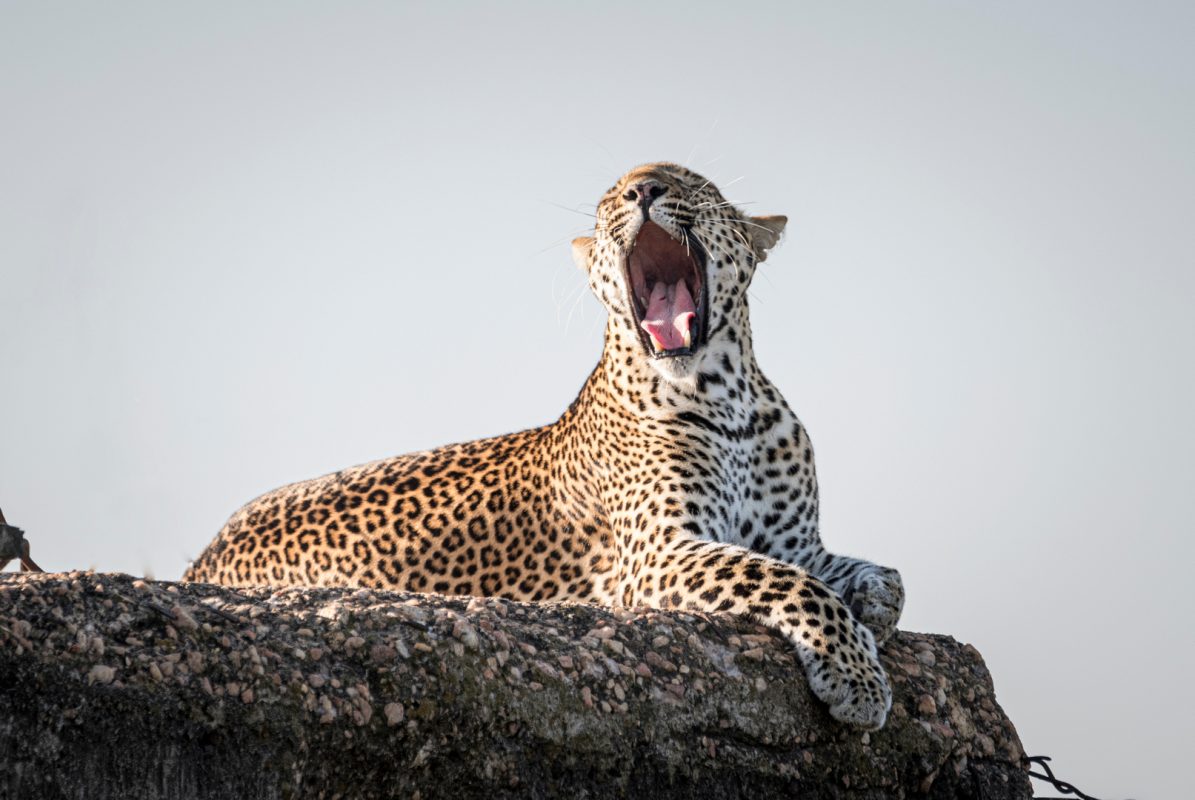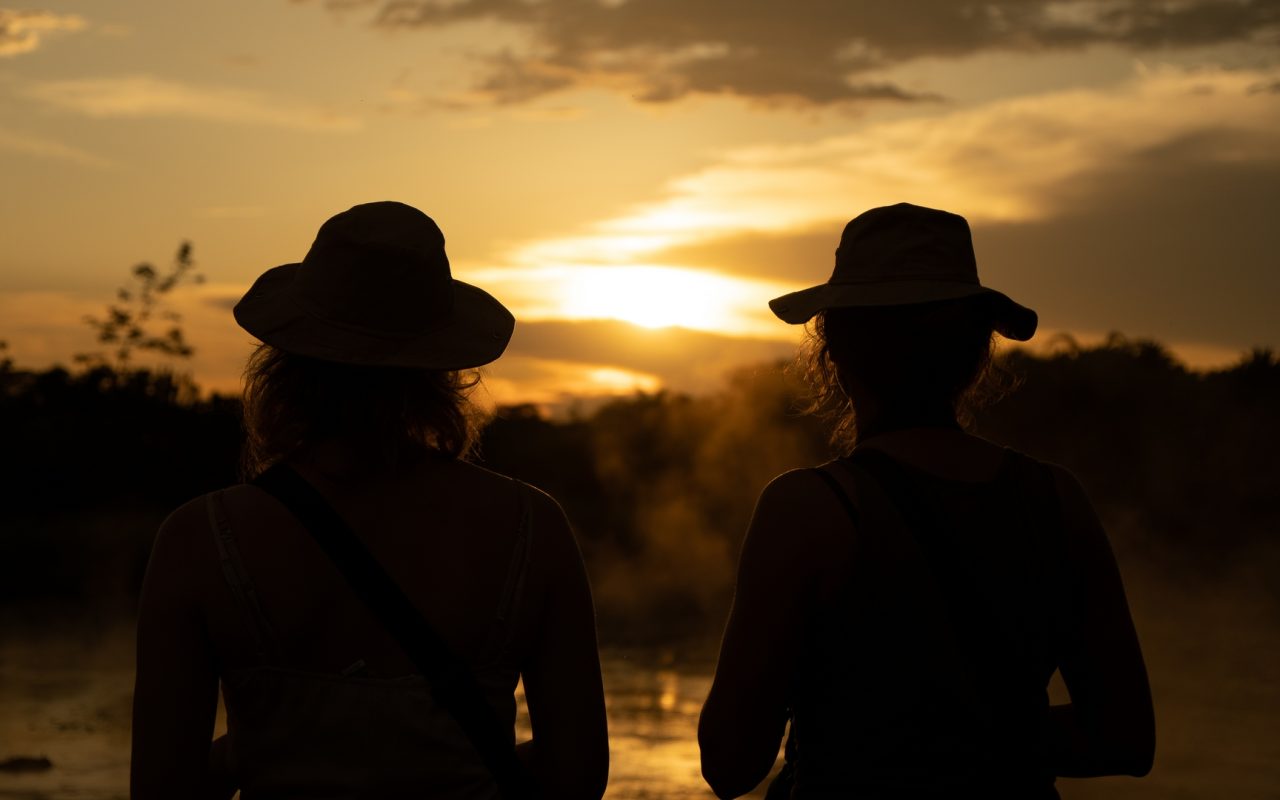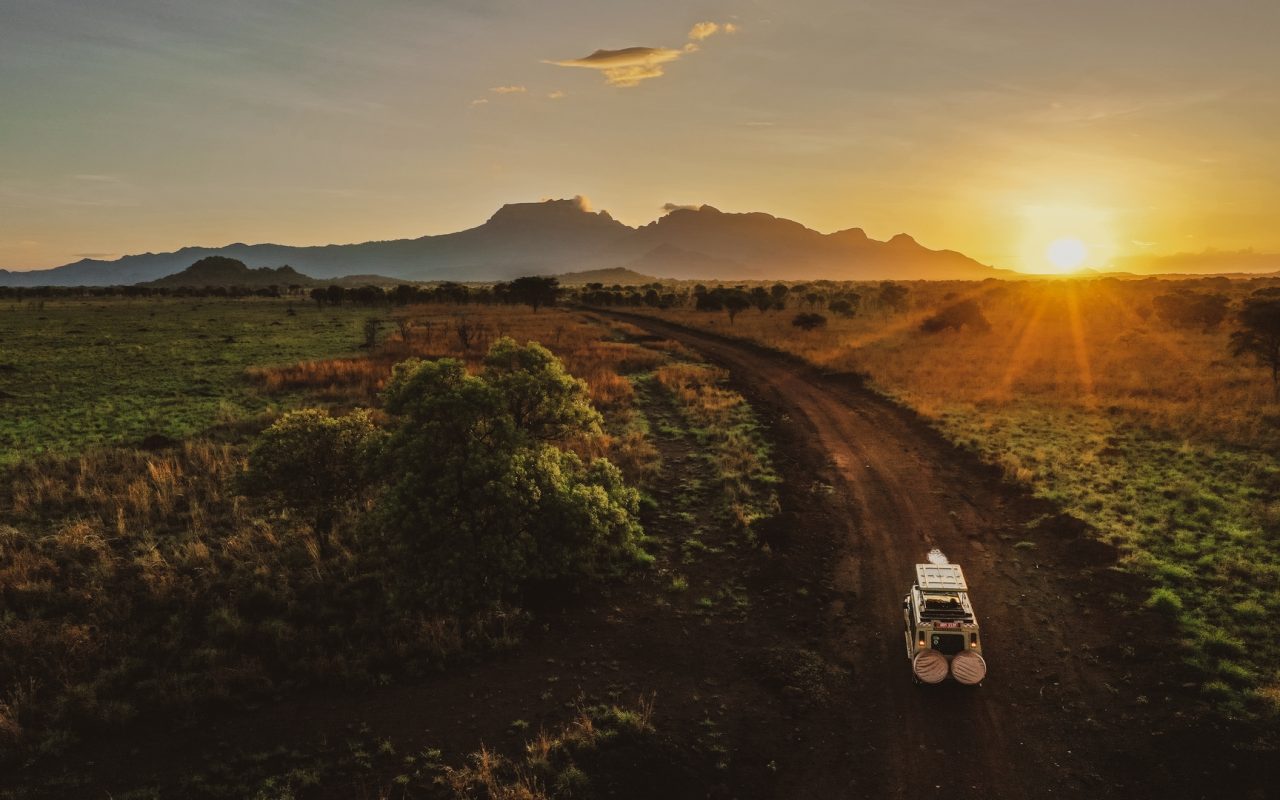Mount Kenya National Park – All You Need To Know Before You Go (with Photos and Videos)
All you need to know about Mount Kenya National Park before you go for a Kenya safari. Mount Kenya National Park is a protected area surrounding Mount Kenya, the second-highest mountain in Africa after Kilimanjaro. It is located in central Kenya, about 16.5 kilometers south of the equator. The park was designated a UNESCO World Heritage Site in 1997 for its outstanding biodiversity and ecological significance.
Visitors to Mount Kenya National Park can experience a range of ecosystems and breathtaking landscapes while enjoying outdoor activities in a protected natural environment.
Mount Kenya is an extinct stratovolcano with three main peaks: Batian, Nelion, and Lenana. Batian is the highest peak, standing at 5,199 meters (17,057 feet) above sea level.
The park is renowned for its diverse flora and fauna, ranging from lower montane forest to alpine vegetation. The lower slopes are covered with dense forests, while the higher elevations feature Afro-alpine moorlands and rocky areas.
Mount Kenya National Park is home to a variety of wildlife, including elephants, buffalo, monkeys, and a wide range of bird species. The park provides important habitat for numerous endemic and endangered species.
Location of Mount Kenya National Park
Mount Kenya National Park is located in central Kenya, near the town of Nanyuki. The park surrounds Mount Kenya, which is situated approximately 175 kilometers (about 109 miles) northeast of the capital city, Nairobi. Mount Kenya itself is located near the equator, approximately 0.5 degrees south, making it one of the few places in the world where you can find equatorial snow.
The park’s coordinates are approximately between 0.1500° S latitude and 37.3080° E longitude. The nearest major town is Nanyuki, which serves as a gateway for those exploring Mount Kenya and its national park. Nanyuki is accessible by road from Nairobi and serves as a base for many trekkers and climbers venturing into the park.
Safari Attractions in Mount Kenya National Park
While Mount Kenya National Park is primarily known for its stunning mountainous landscapes, diverse ecosystems, and trekking opportunities, it is not typically associated with traditional safaris that are more commonly associated with the vast savannahs of parks like the Maasai Mara. However, the park does offer unique wildlife experiences, and visitors can encounter various species as they explore the lower slopes and forested areas.
While the wildlife experiences in Mount Kenya National Park may not be as prominent as in other safari destinations, the park’s unique combination of mountainous terrain, forests, and alpine ecosystems offers a different kind of adventure for nature enthusiasts. Visitors can enjoy trekking, birdwatching, and experiencing the diverse ecosystems surrounding the iconic Mount Kenya.
Attractions in Mount Kenya National Park
- Elephants and Buffalo
- Primates
- Bird watching
- Small Mammals
- Lakes and Wetlands
Safari Activities in Mount Kenya National Park
While Mount Kenya National Park is not primarily known as a traditional safari destination, it offers a range of activities that allow visitors to explore its diverse ecosystems and enjoy unique experiences.
Before embarking on any activities, it’s advisable to check with the park authorities or hire experienced guides to ensure your safety and enhance your overall experience. Whether you’re an adventure seeker, nature enthusiast, or cultural explorer, Mount Kenya National Park offers a unique blend of activities in a diverse and stunning natural setting.
Safari-Like Activities You Can Enjoy in Mount Kenya National Park:
- Trekking and Climbing
- Wildlife Viewing
- Bird watching
- Photography
- Camping and Hiking
- Cultural Interaction
- Scenic Drives
List of Accommodations in Mount Kenya National Park
Mount Kenya National Park has various accommodation options catering to different preferences and budgets. However, it’s important to note that the availability of accommodations and their details may change, so it’s advisable to check for the latest information and make reservations in advance.
Remember to verify the current status and availability of these accommodations, as well as any new establishments that may have been introduced since my last update. Additionally, consider checking recent reviews from travelers for the most up-to-date information on the quality of services and facilities provided by these accommodations.
Here is a list of some accommodations in and around Mount Kenya National Park:
- Serena Mountain Lodge
- Fairmont Mount Kenya Safari Club
- Naro Moru River Lodge
- Mountain Rock Lodge
- Bantu Mountain Lodge
- The Castle Forest Lodge
- Chogoria Bandas
- Chaka Ranch
- Rutundu Log Cabins
- Nanyuki Simba Lodge
How to Get to Mount Kenya National Park?
Getting to Mountain Kenya National Park typically involves traveling to the surrounding towns and then proceeding to the park. The primary gateway towns for accessing Mount Kenya National Park are Nanyuki, Chogoria, and Naro Moru.
Always check for the latest road conditions, especially if you are traveling during the rainy season. Additionally, consider contacting the park authorities, your accommodations, or a local tour operator for up-to-date information and assistance in planning your journey to Mountain Kenya National Park.
General Steps to Get to Mount Kenya National Park
By Air: The nearest major airport is Nanyuki Airport (NYK). You can fly into Nanyuki from Nairobi’s Wilson Airport. Some lodges and accommodations may offer transfers from the airport.
B by Road
From Nairobi
Nanyuki Route
Take a road trip from Nairobi to Nanyuki, which is one of the main entry points to Mountain Kenya National Park.
The journey takes approximately 3 to 4 hours by car, depending on traffic and road conditions.
The road trip passes through towns like Thika and Nyeri.
Chogoria Route:
If you are approaching from the east, you can head to Chogoria, which is another entry point to the park.
The journey from Nairobi to Chogoria takes longer, and the road conditions may vary.
Best Time to Visit Mount Kenya National Park
The best time to visit Mountain Kenya National Park largely depends on your preferences and the type of activities you plan to undertake. However, there are general considerations regarding weather, wildlife, and visibility that can help you choose an optimal time for your visit. Keep in mind that weather patterns can vary, and conditions on the mountain may change. It’s advisable to check weather forecasts and road conditions before your trip. Additionally, if you plan to climb or trek, make sure to have the necessary permits and hire experienced guides for a safe and enjoyable experience.
Dry Season (Late December to February, and July to early October)
These months constitute the dry seasons, which are generally considered the best time to visit Mountain Kenya.
Clear skies and good visibility provide excellent views of the mountain and surrounding landscapes.
Trekking and climbing conditions are more favorable during the dry seasons, with less rainfall and lower chances of encountering slippery trails.
Wildlife Viewing
The dry seasons are also good for wildlife viewing, as animals tend to gather around water sources, making them easier to spot.
Climbing and Trekking
The periods from late December to February and July to early October are popular for climbing and trekking due to the more stable weather conditions.
Wet Season (March to June, and November to mid-December)
The wet seasons bring higher rainfall, and the mountain can be covered in mist and clouds, potentially limiting visibility.
Trekking during the wet seasons can be challenging due to slippery trails, but it offers a lush and vibrant landscape.
Wildflowers and Birdlife
If you’re interested in wildflowers, the wet seasons bring an abundance of blooming plants, creating a colorful and picturesque setting.
Birdlife is also more active during the wet seasons.
Crowds
The dry seasons, especially from late December to early January and July to early October, are peak tourist seasons. If you prefer fewer crowds, you may consider visiting during the shoulder seasons.
Temperature
Mount Kenya experiences relatively consistent temperatures throughout the year, but it can be colder at higher elevations. Bring appropriate clothing, especially if you plan to trek to higher altitudes.
Luxury Africa Tours & Holidays – Deks Safaris and Tours Ltd
- 6 Days Uganda Kenya Tour
- 7 Days Rwanda Uganda Tour
- 8 Days Kenya Uganda Luxury Safari
- 8 Days Kenya Uganda Tour
- 9 Days Kenya Uganda Safari
- 10 Days Kenya Uganda Safari
- 10 Days Uganda Kenya Tanzania Safari
- 10 Days Rwanda Kenya Tanzania Safari
- 11 Days Kenya Uganda Rwanda Safari
- 11 Days Kenya Uganda Safari
- 11 Days Uganda Kenya Zanzibar Safari
- 11 Days Rwanda Kenya Safari
- 12 Day Kenya Uganda Rwanda Safari
- 13 Days Uganda Kenya Tanzania Safari
- 14 Days Across Africa Safari
- 14 Days Rwanda Tanzania Safari
- 15 Days Kenya Rwanda Tour
- 16 Days Kenya Uganda Safari




